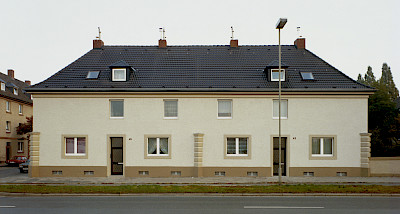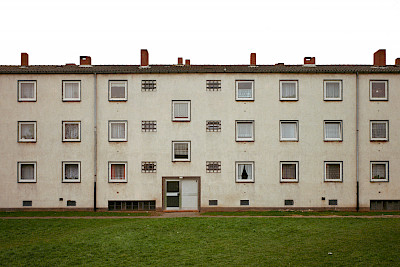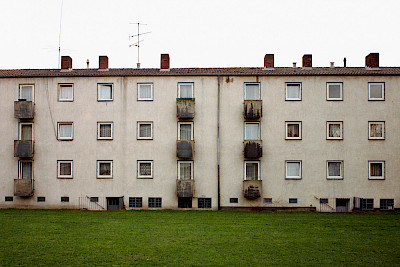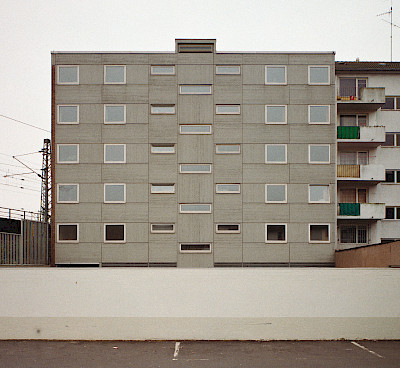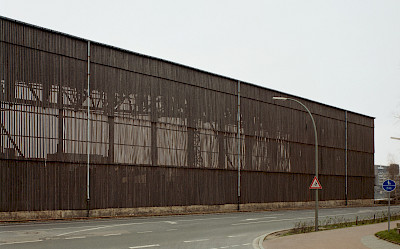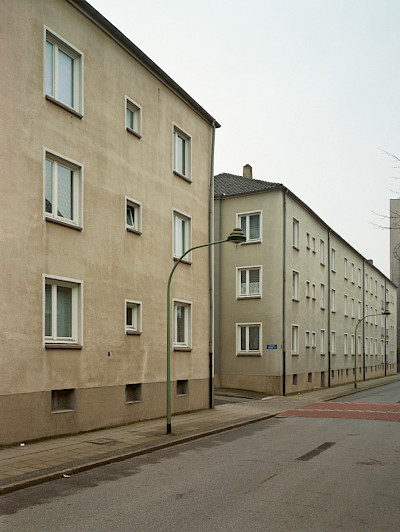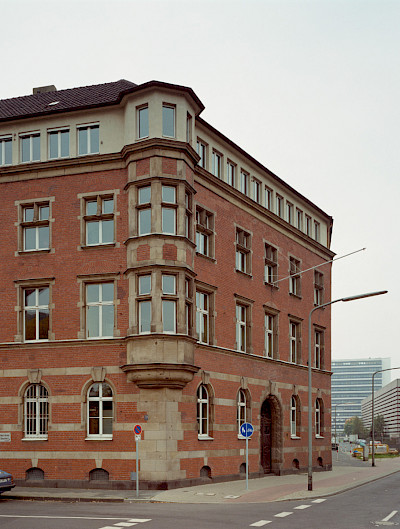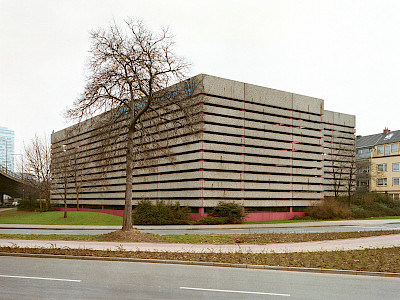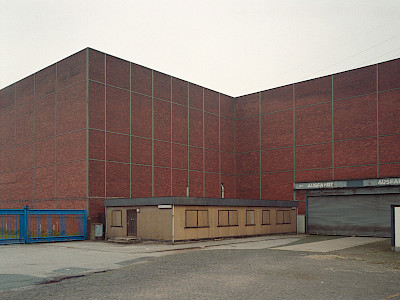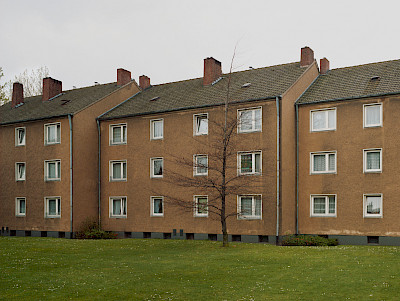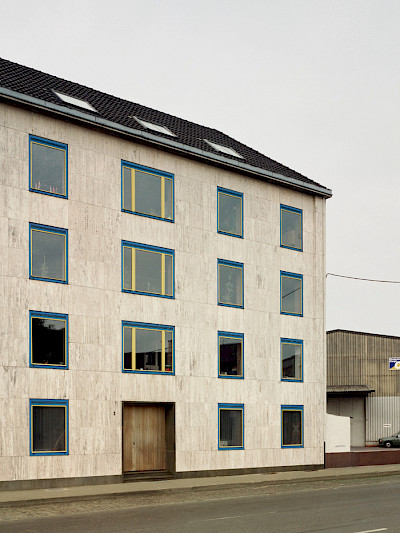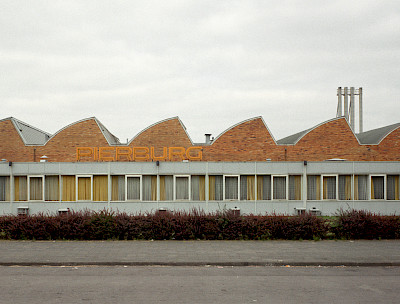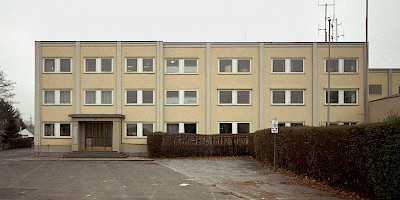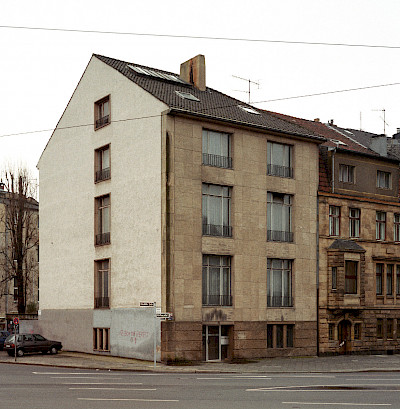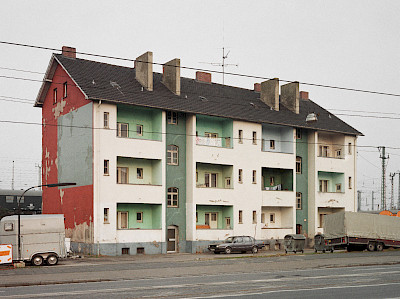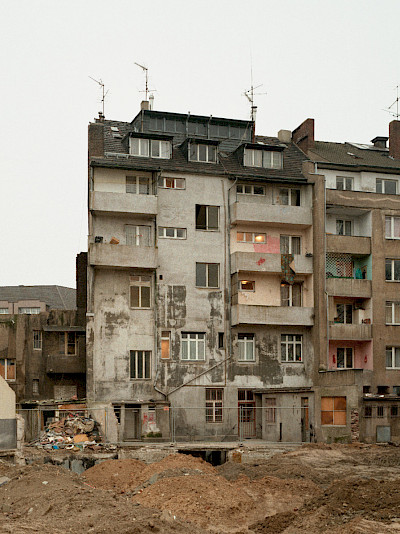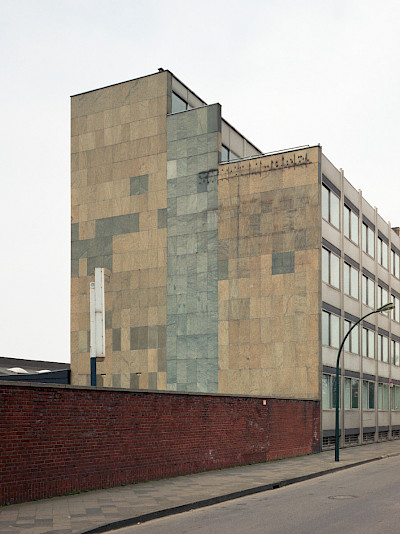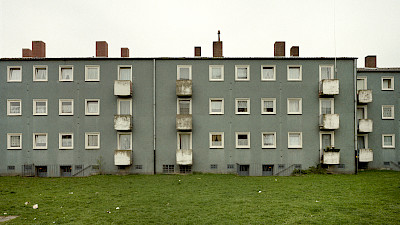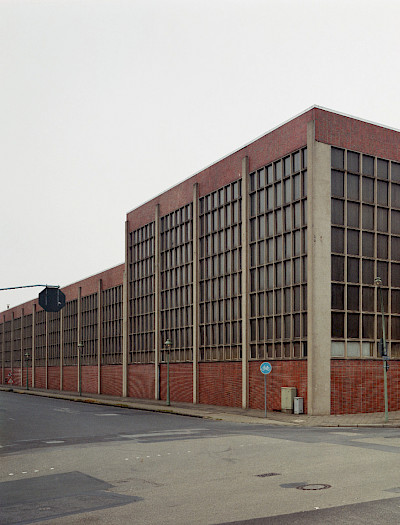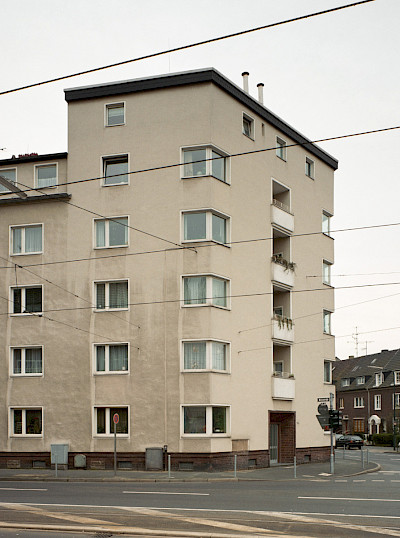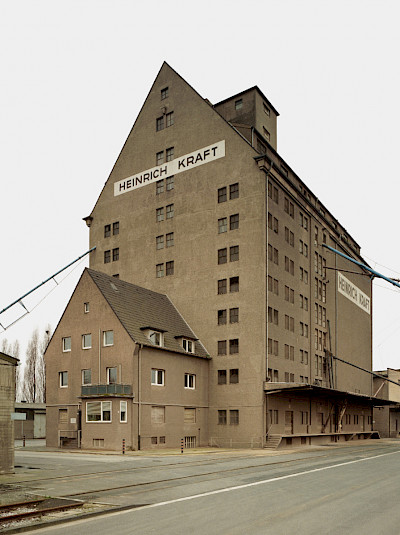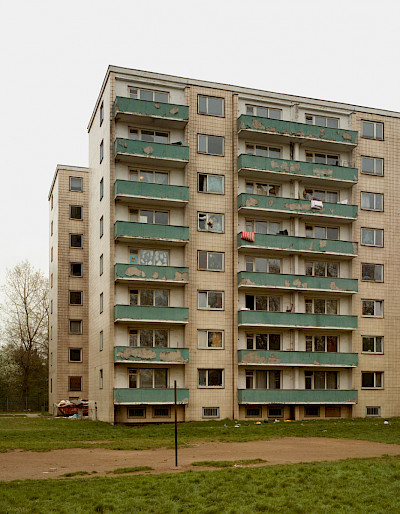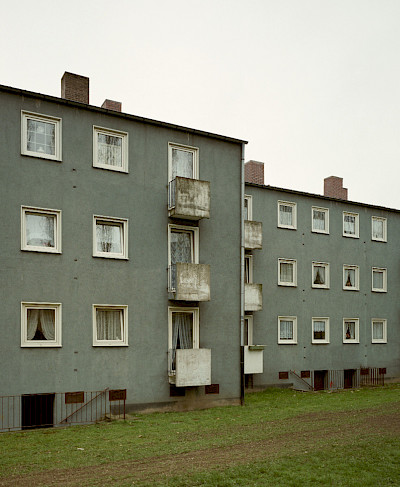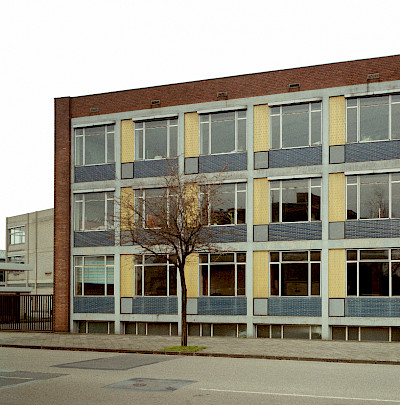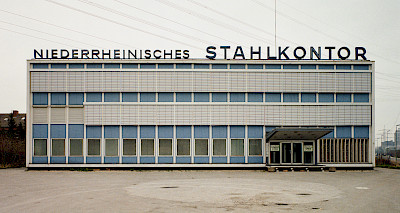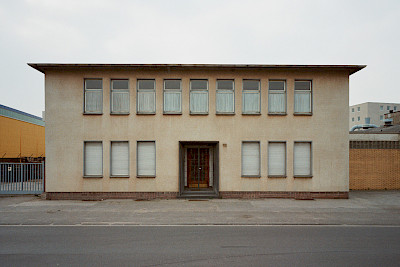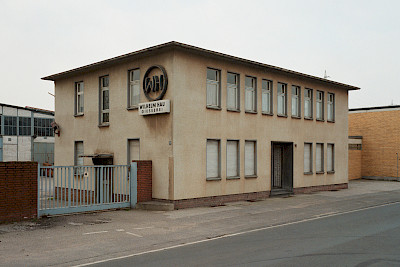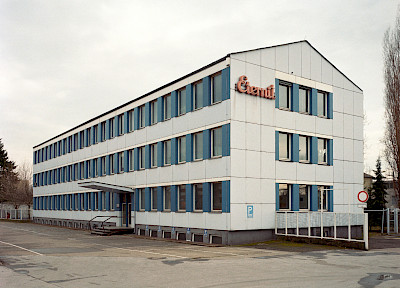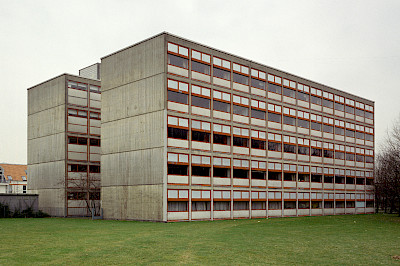Houses
The experience Ruff had gained making the Portrait series prompted him to return to a pictorial idea he had already concerned himself with when working on the Interiors: exterior shots of buildings. He chose unassuming, trivial buildings from the 1950s to 1970s in and around Düsseldorf. In order to be able to work without being disturbed, he took the images in the early morning and as a rule between January and March. During those months, the sky in Central Europe tends to be a uniform gray that provided the desired neutral background. When structuring the shots, Ruff took his cue from the matter-of-fact approach of Bauhaus photography and the architectural photography of the 1950s–70s, which he knew from postcards and the architectural books of that period. In order to adapt his images to the initial pictorial idea, he retouched two of the photographs (Häu 01, Häu 08) in line with the principle of “retouch as much as necessary and as little as possible.”

Houses
The experience Ruff had gained making the Portrait series prompted him to return to a pictorial idea he had already concerned himself with when working on the Interiors: exterior shots of buildings. He chose unassuming, trivial buildings from the 1950s to 1970s in and around Düsseldorf. In order to be able to work without being disturbed, he took the images in the early morning and as a rule between January and March. During those months, the sky in Central Europe tends to be a uniform gray that provided the desired neutral background. When structuring the shots, Ruff took his cue from the matter-of-fact approach of Bauhaus photography and the architectural photography of the 1950s–70s, which he knew from postcards and the architectural books of that period. In order to adapt his images to the initial pictorial idea, he retouched two of the photographs (Häu 01, Häu 08) in line with the principle of “retouch as much as necessary and as little as possible.”






